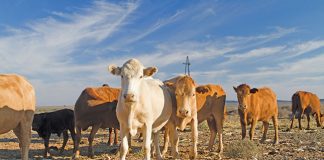
In many communal settings, livestock farmers tend to sell one or two animals at a time to neighbours or acquaintances. This might bring in some money in the short term, but it won’t make you better off in the long run.
There are two reasons for this: you won’t get the best price for your animals, and you are unlikely to reinvest this small sum in the farming business.
By contrast, if you sell, say, 15 sheep on the market when sheep are scarce and demand is high, you will make more money per animal and have a sizeable sum to reinvest.
Most reputable buyers on the market would ordinarily want to buy a number of sheep and collect them in a truck. So what do you do if you have only, say, five sheep or two cattle for sale?
Combine your efforts
The simplest solution is to organise a community meeting and get a number of sellers like yourself to combine their livestock into larger parcels before contacting a buyer. Here’s how to go about it:
- Make sure that everyone agrees on a date for the sale. This should not be at times in the year such as shortly after wool-shearing season, because many farmers sell their older sheep then and the market becomes oversupplied, lowering prices.
- Ensure that livestock brought together for the sale day are all in the best possible condition. Just a few poor animals may make the entire parcel look inferior. Feed the animals or place them on good veld for a few weeks prior to marketing. And before doing this, dose and dip them to remove parasites that could affect the fattening process.
- Find out the current per-kilogram prices being paid, then calculate how much you could get for each of your animals. The easiest way to do this is to use a ‘live weight’ price, where the animal is weighed on a scale in your presence. For example, if your sheep weighs 50kg and the quoted price for fat slaughter sheep is R30/kg, the live- weight price of your animal R1 500.
- Set up a marketing team that can interact with reputable buyers, track the current and future market prices, and arrange for the buyer to attend planned sale days. This team can also organise how and when sellers are paid, keep sales records, and even discuss obtaining a form of commission payment (per animal sold) from buyers, which can be used by the community to cover marketing costs.
Fat vs thin carcasses
Livestock are not all worth the same in the red meat industry. Lean or older animals will be priced considerably lower than younger or fatter animals. There are different price categories according to livestock age and body condition (fat covering), and different breeds will also fetch different prices.
A Jersey ox or weaner, for example, will not be priced the same as a pure beef-type animal such as a Beefmaster. So it’s important to use good genetics when breeding animals.
Many farmers do not fully understand the various age and fat grades of their livestock and this can be costly in the long term.
For example, a fat ox may be priced at R22/kg live weight, whereas a very thin ox may be priced as low as R15/kg. A fat 400kg ox would thus realise R8 800 (400kg x R22) compared with a thin 400kg ox that would realise only R6 000 (400kg x R15).
Judging the fat grade of a live ox is not that simple for the inexperienced farmer, and getting the grade wrong before marketing can cost you dearly.
For this reason, consider organising formal training for the people who make up your marketing committee, so that they can learn about red-meat grades, desirable slaughter animal types, and so forth.
For this, you can approach an industry role player such as the Red Meat Producers’ Organisation, which can advise you on where this training is available.
Alternatively, you could partner with an experienced and willing farmer who could teach your marketing people the necessary skills.
Shane Brody is involved in an outreach programme aimed at transferring skills to communal farmers.










